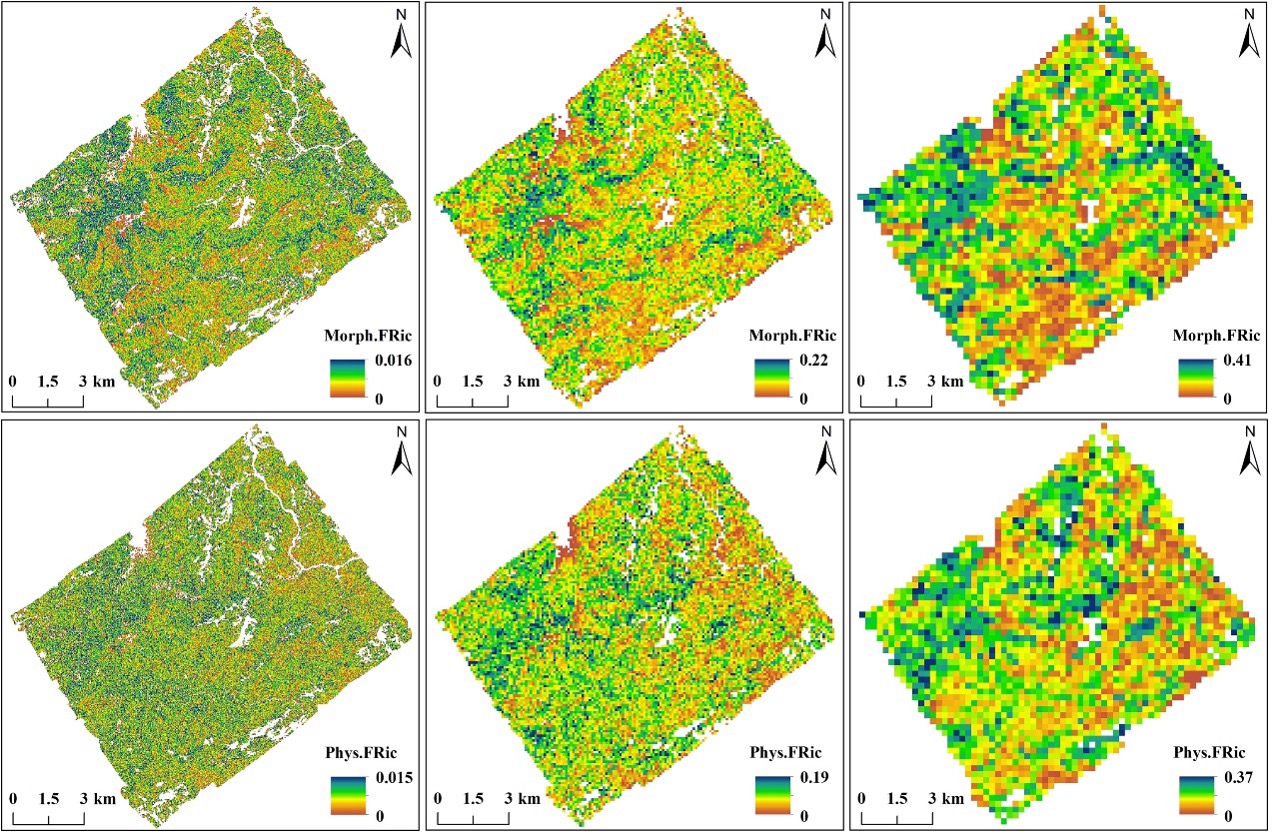Estimating Forest Functional Diversity by Remote Sensing
Mar 30, 2023
Diversity is essential to healthy ecosystem. Functional diversity (FD), which refers to the variation of functional traits of the organisms in a given ecosystem, is a major component of biodiversity. Spatially explicit data of forest functional traits and FD are essential for understanding biodiversity effects on forest ecosystem functioning.
Remote sensing can complement ground-based surveys with the advantage of contiguous spatial coverage, providing an efficient way to quantify forest functional traits and FD.
A research group led by Prof. ZENG Yuan from the Aerospace Information Research Institute (AIR) of the Chinese Academy of Sciences (CAS), in collaboration with the Remote Sensing Laboratories of University of Zurich, retrieved forest functional traits and FD from airborne LiDAR and Sentinel-2 data, and investigated forest functional diversity–productivity relationships using wall-to-wall data in a subtropical forest.
This study was published in Remote Sensing of Environment on Mar. 11.
The research estimated functional diversity indices (functional richness, evenness and divergence) across ecosystem and landscape scales based on the trait values distributed in the multidimensional trait space, which extended their individual tree-based functional diversity mapping approach to a larger area on the basis of previous scaling study.
The results showed that airborne LiDAR-derived morphological traits correlated well with in-situ plot-level morphological data (R2 ≥ 0.67). For physiological traits, partial least squares regression performed better than the vegetation index approach. Study found that the community-weighted means of morphological and physiological traits strongly affected forest carbon stocks and primary productivity, and morphological FDs were also important predictors of variation in these productivity proxies.
This study highlighted the potential of using remotely sensed functional traits to assess the relationship between trait diversity and ecosystem functioning at different scales, which will provide a scientific basis for the conservation and management of forest resources.

Spatial patterns of morphological (top) and physiological (bottom) richness at 30m, 100m and 250m resolutions.
Recently, the research group has also achieved progress in forest and grassland species diversity estimations (Front. Plant Sci., 2023 & Front. Ecol. Evol., 2023). Moving forward, the future research aims to scale-up the plant diversity monitoring to regional or national scales by integrating ground surveys, UAV-borne, airborne and spaceborne observations.
Contact: luyq@aircas.ac.cn



News & Events